Header Image: HCL_03868, Fairfield Bridge, Hamilton, c.1940, photograph courtesy of Hamilton City Libraries. “The bridge opened in 1937, and it is one of only a very few bowstring bridges in New Zealand. It crosses the Waikato River just north of the CBD.” — Perry Rice, Whakaputu Special Collections Librarian.
Hamilton City Libraries holds an extensive archive of the region’s cultural heritage material, including books, journals, magazines, and memorabilia, as well as a compelling oral history collection. Its archive notably includes copies of the Waikato Times dating back to 1872, alongside unpublished letters and diaries from early Waikato settlers. Available for viewing both online and at Hamilton’s Central Library, these collections are a valuable resource for a wide range of researchers, including those interested in local history, family history, and genealogy. In 2007, the library launched a digitisation project, focusing on its holdings of aerials, maps, and a significant photographic collection, which included images transferred from the Waikato Museum during the redistribution of its exhibition spaces. NZMS captured 32,000 heritage photographic negatives as part of this initiative, a project spanning 15-years!
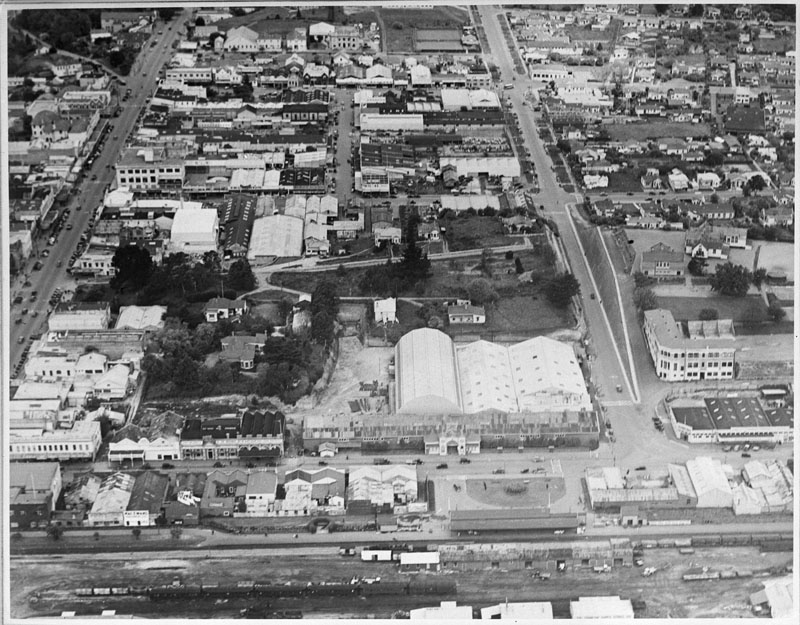
This comprehensive project not only highlighted the challenges of digitising negatives but also the insights such primary sources can bring to the community, significantly aided by experts like Perry Rice, Whakaputu Special Collections Librarian at Hamilton City Libraries. Perry brought extensive knowledge of the area’s history to the project and it was fascinating to learn more about his approach to visual research as we reflected on this long-running project.
Providing Historical Context
Perry is well known for his extensive knowledge surrounding Hamilton’s local history and his ability to extract information from heritage photographs. Perry initially joined the library in 2001, taking on a part-time permanent position where he intended to stay for just six months. However, he moved into a full-time position on the library’s reference team in February 2002, and has now been a part of the library for twenty-two years!

“Gradually it all changed. I got to ‘do’ photographs. Mostly at that stage, it was just a simple matter of adding the correct information and ridding the records of incorrect stuff. That in itself is problematic – you don’t know what you don’t know. However, the difference between Governor Ranfurly and General Babington couldn’t have been clearer! My thoughts at the beginning of this project, which was very much a small part of my work, were, ‘What a brilliant opportunity and a fantastic resource’.”
Perry Rice, Whakaputu Special Collections Librarian, Hamilton City Libraries.
Perry, in collaboration with his manager Rowan Miller, regularly contributes to the Waikato Times’ History Page. Their column, Camera Obscura, showcases a selection of heritage images, some of which have been digitised by NZMS, accompanied by a short narrative. This offers readers a unique window into the region’s local history and has become a key feature of the newspaper since it began in 2010. After a brief pause due to the COVID-19 pandemic, it was revived again in July 2021, and continues to receive positive feedback from a broad audience. Additionally, Perry has also contributed to the Number 8 Network, further cementing his role as a prominent voice in sharing the region’s history.
The Collections
The digitisation project encompassed two primary photographic collections:
- The public donation collection
- The M-series collection
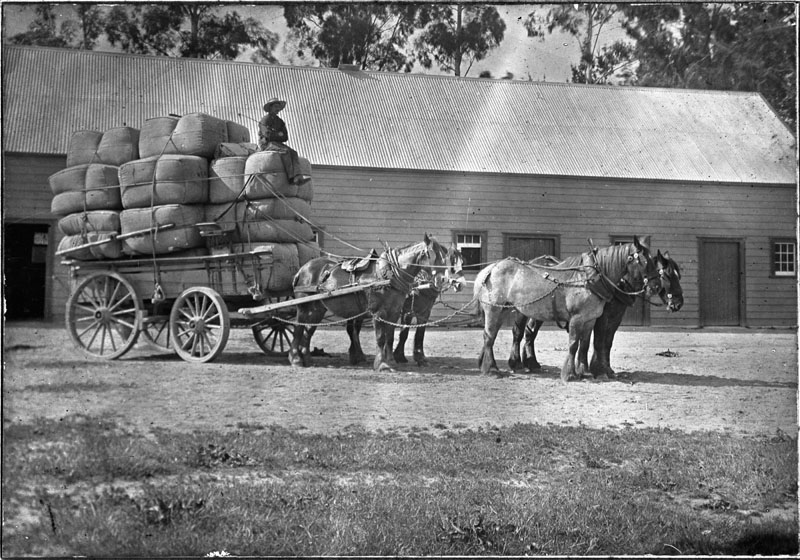
The public donation portion of the Hamilton City Libraries’ photographic collection includes an interesting array of 18,000 negatives and prints. They were primarily contributed by local families and individuals, with occasional input from businesses and organisations. Some of these were initially lent to various institutions under an agreement to return the originals after making copies. The M-Series is a collection of images taken by Waikato Museum photographers over 25 years, which were relocated with the museum’s Reference Library to create more exhibition space. The library also holds several significant collections of glass plate negatives, with three major acquisitions added recently.
The Art of Selection
Perry’s role in the selection process was vital for the success of the digitisation project. He examined approximately 90,000 images, using a magnifying glass and lightbox, to determine which images were worthy of digitisation. This task, while enormous, ensured the photos with the most significant historical information were able to be preserved digitally. He looked for the best images to illustrate Hamilton’s history followed by that of the wider Waikato region. Exceptions to this hierarchy are images of a Hamilton or Waikato family on their travels that would complete that history within the collection.
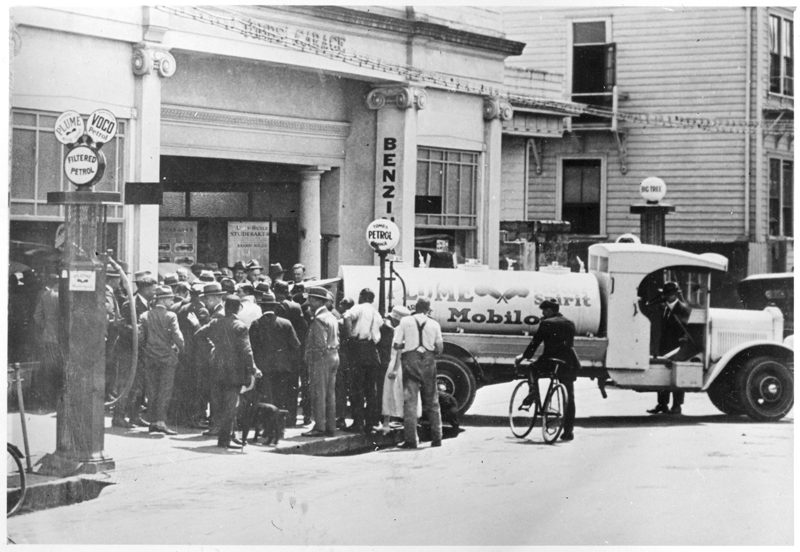
When deciding if an image is worth digitising or not, Perry would look for clues in the image itself to assess its date and historical merit. For example, certain aspects like different models of cars, the existence (or otherwise) of specific buildings, or even street signage can aid in dating a photograph.
“It may be the specific element dictates the photo can be ‘no earlier than’ or ‘no later than.’ An example is an image of Victoria Street very busy with traffic. It was dated years ago as ‘post-war – 1946/47’. In fact, in that image, there is the nose of a Ford Consul which was introduced to New Zealand in 1951. Ergo, that photo could not be pre-1951. An image of the south end of Victoria Street thought to have been 1950/60 – could only be as late as 1954 – the brewery owners built a bottling plant on that site 1955/56.”
Perry Rice, Whakaputu Special Collections Librarian, Hamilton City Libraries.
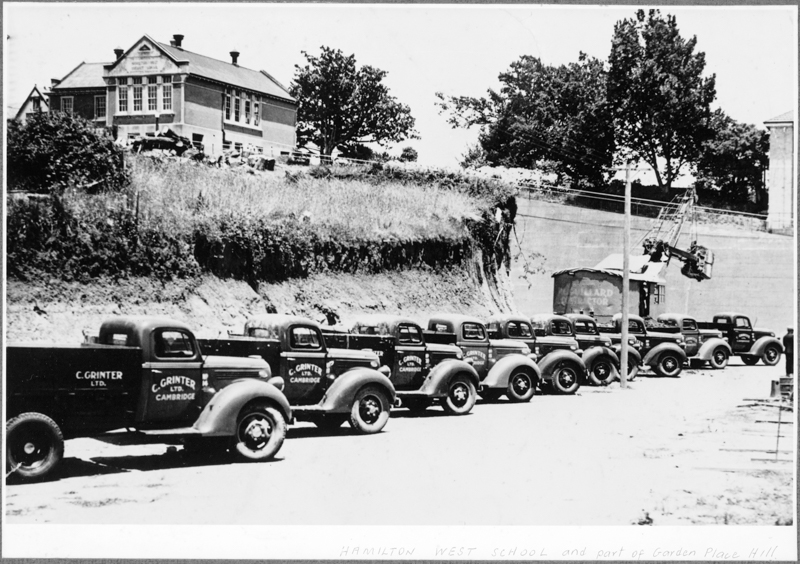
The completion of batch 74 at the end of 2022 marked the conclusion of the planned portion of the digitisation project. It was an enormous job with about 32000 negatives digitised!
Rediscovering History
NZMS re-digitised some negatives that had already been scanned in the past to improve their quality. One photograph that was rescanned depicted a rural scene of a country road in Ngāruawāhia. Perry had imagined it as a kind of spring gossamer scene with dew on the fields and a floating layer of morning fog. After digitisation, it was discovered that the photograph was quite different!
“You ruined my narrative! The photo came back in digital form as a country road with fields on each side and sheep! Probably 100s of them, all quite distinct. They’d previously been blurred together.”
Perry Rice, Whakaputu Special Collections Librarian, Hamilton City Libraries.
Another rescan uncovered previously unreadable business names on windowpanes under a veranda canopy. This unexpectedly revealed the original location of the Public Trust in Hamilton, a once unknown detail. The enhanced image clarity of the rescans demonstrates some of the advantages of collaborating with a professional digitisation agency.
Photographs as Evidence
The collection captures the essence of Hamilton and the greater Waikato region, chronicling the life of early European settlers up until almost the present day. It includes personal photographs of individuals and families from Hamilton often illustrating unique stories. For example, a student’s journey from Hamilton to the Dunedin Medical School in the early 1900s is depicted – including his experiences with the Dunedin cable car. The collection also features images of landscapes and architecture that are key for documenting the development of various locations across Hamilton.
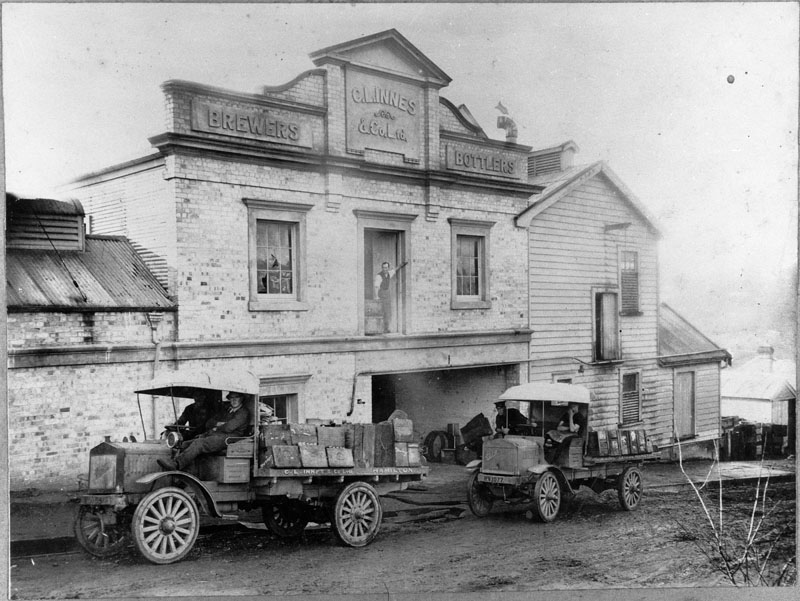
“I don’t look at photographs as quaint old bits of history; they are evidence. The very simple adage, ‘a picture is worth a thousand words’, comes to mind. These images can also reveal a specific timeline by referencing known quantities (e.g., motor vehicle registration plates) and can give dates to other elements not elsewhere dated. For example, when was a particular building put up? There happens to be no official record, but a photo has it under construction. A passing vehicle might show a 1936/37 registration plate which further closes in on commencing or finishing dates.”
Perry Rice, Whakaputu Special Collections Librarian, Hamilton City Libraries.
Emulsion Side Up!
The digitisation of photographs has become standard practice in many institutions, offering broader access to historical collections. Photographic negatives are often stored away because they are extremely vulnerable to degradation from light, temperature changes, and wear. Digitisation not only preserves valuable information but also simplifies access, unlike the difficult task of sifting through negatives without proper viewing equipment. Careful handling and identification of various photographic mediums and techniques need to be undertaken before digitisation (e.g., including whether its substrate is nitrate, acetate, or polyester) to determine the right approach.
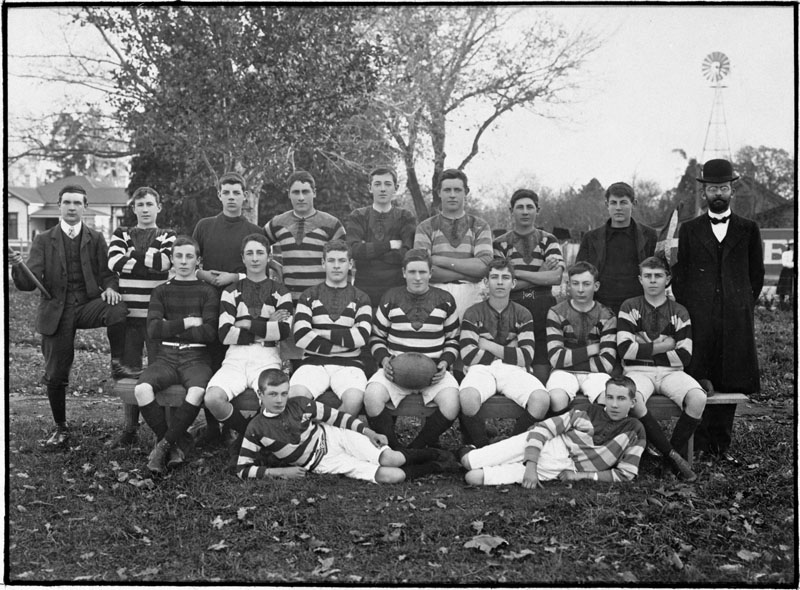
One challenge during the digitisation process was ensuring the images were correctly orientated during capture. This can be quite nuanced when working with negatives. It is usually possible to determine the “right way up” by identifying which side has the emulsion layer (non-shiny side). However, this is sometimes tricky to see, especially with older images like those in the Hamilton City Libraries collection.
Key indicators, such as the direction of text on number plates and street signs, can guide you in ensuring images are not inverted. Other subtle details are also telling, for example, the arrangement of buttons on clothing. In British society, men’s clothing typically has buttons on the right, while women’s are on the left. Similarly, local knowledge can play a vital role as well like being able to identify the correct positioning of landmarks or buildings.
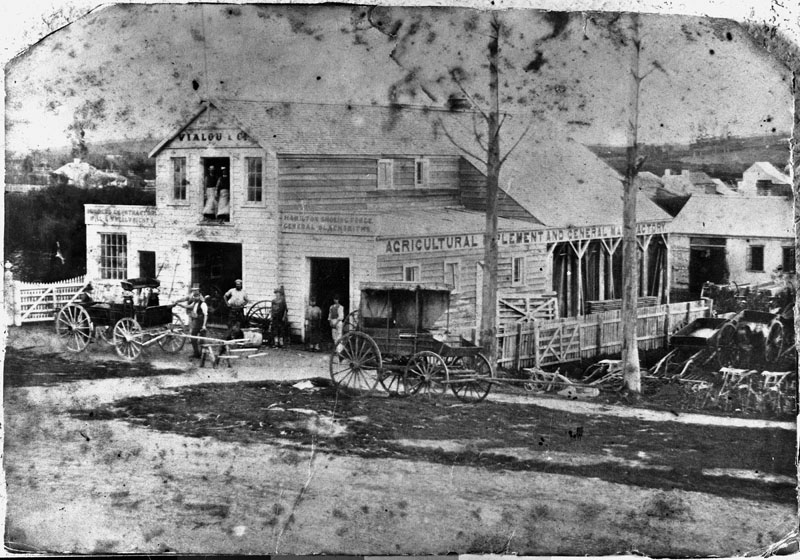
Solving a Mystery
When asked about any notable experiences during his time researching and interpreting images in the collection, Perry Rice shared the following interesting story:
“In 2012, I was sent a series of images from Auckland for identification. I could easily ID about three but not the rest. One, a landscape panorama was intriguing but didn’t have a single recognisable element. It was a very evocative, bucolic almost, piece of countryside on the edge of a town. See image HCL_16672 and note the white house on the upper left. These were from a collection of glass plate negatives and the owner was looking for an appropriate home for them.
Perry Rice, Whakaputu Special Collections Librarian, Hamilton City Libraries.
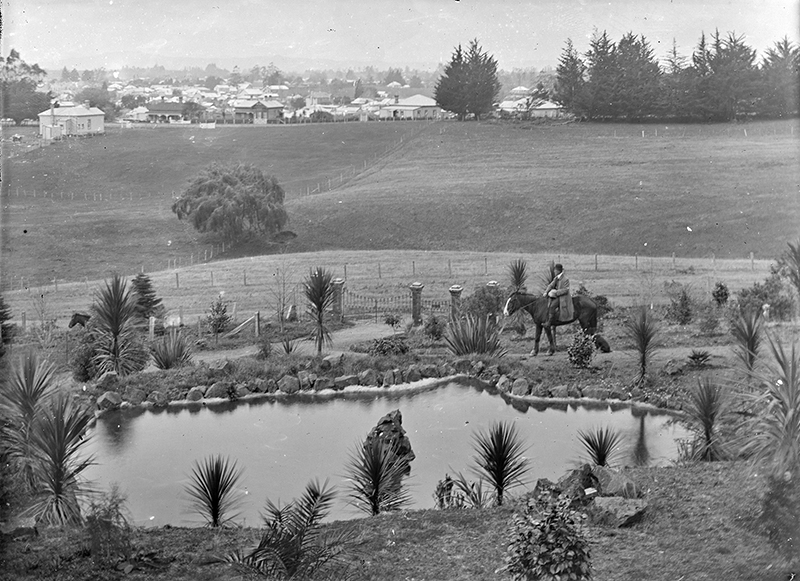
“About five years later, I was searching for a particular view from the ‘water tower hill’ showing the juxtaposition of the railway station to the ‘new’ sale yards and horse bazaar. Here it is in image HCL_07049 which has been in our collection since 1982. Upon seeing the image, I shouted almost inaudibly, ‘Bingo, that’s it!’
Perry Rice, Whakaputu Special Collections Librarian, Hamilton City Libraries.
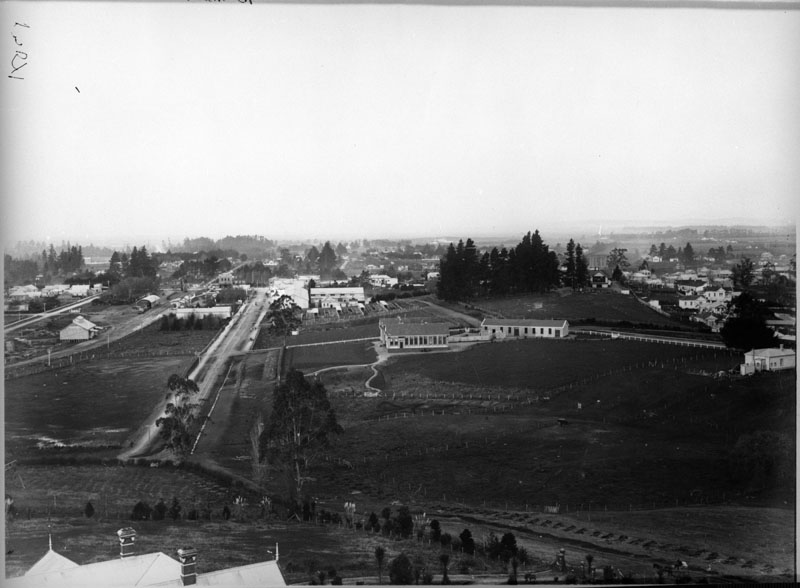
“See the wee white house on the right? It’s the exact same house from image HCL_16672! We were then able to re-visit the collection and with the aid of a local historian, a railway historian, and a little help from Papers Past, we managed to piece together quite a history for the family concerned. Including identifying the location of many of the photos and some of the people as well. This resulted in us receiving their collection of 234 Edwardian (mostly) glass plate negatives which NZMS digitised for us in 2017. It is one of the many examples where the clarity of the images enables forensic-like examination. It’s great!”
Perry Rice, Whakaputu Special Collections Librarian, Hamilton City Libraries.
Community Memory
Public feedback received about the project to digitise the negatives has been overwhelmingly positive, praised as helping to revive forgotten memories and adding depth to the region’s history. The digitisation project was not just about converting physical images into digital files; it was also about preserving a community’s collective memory and ensuring that this taonga is accessible for generations to come.
Digitisation efforts at Hamilton City Libraries are set to continue with the frequent arrival of newly donated collections. Recently, a significant acquisition of over 400 glass plates was sent to NZMS for digitisation, along with approximately twenty rolls of a home movie.
If you hold a collection of heritage photographic prints or negatives, NZMS is here to offer our expertise! Our team is dedicated to preserving cultural heritage material. We can provide you with a detailed assessment and advice surrounding digitisation. Please get in touch with us today!
